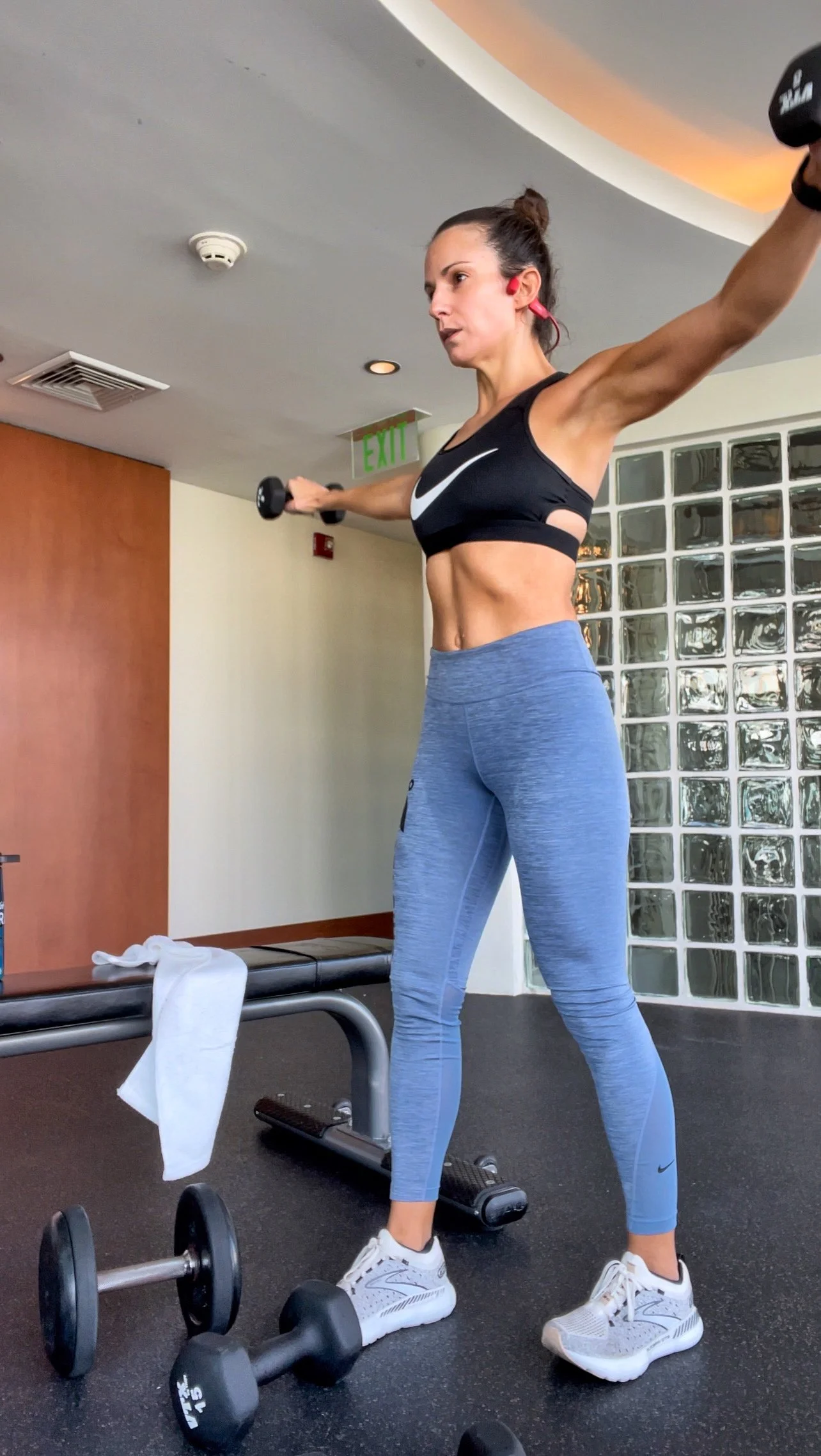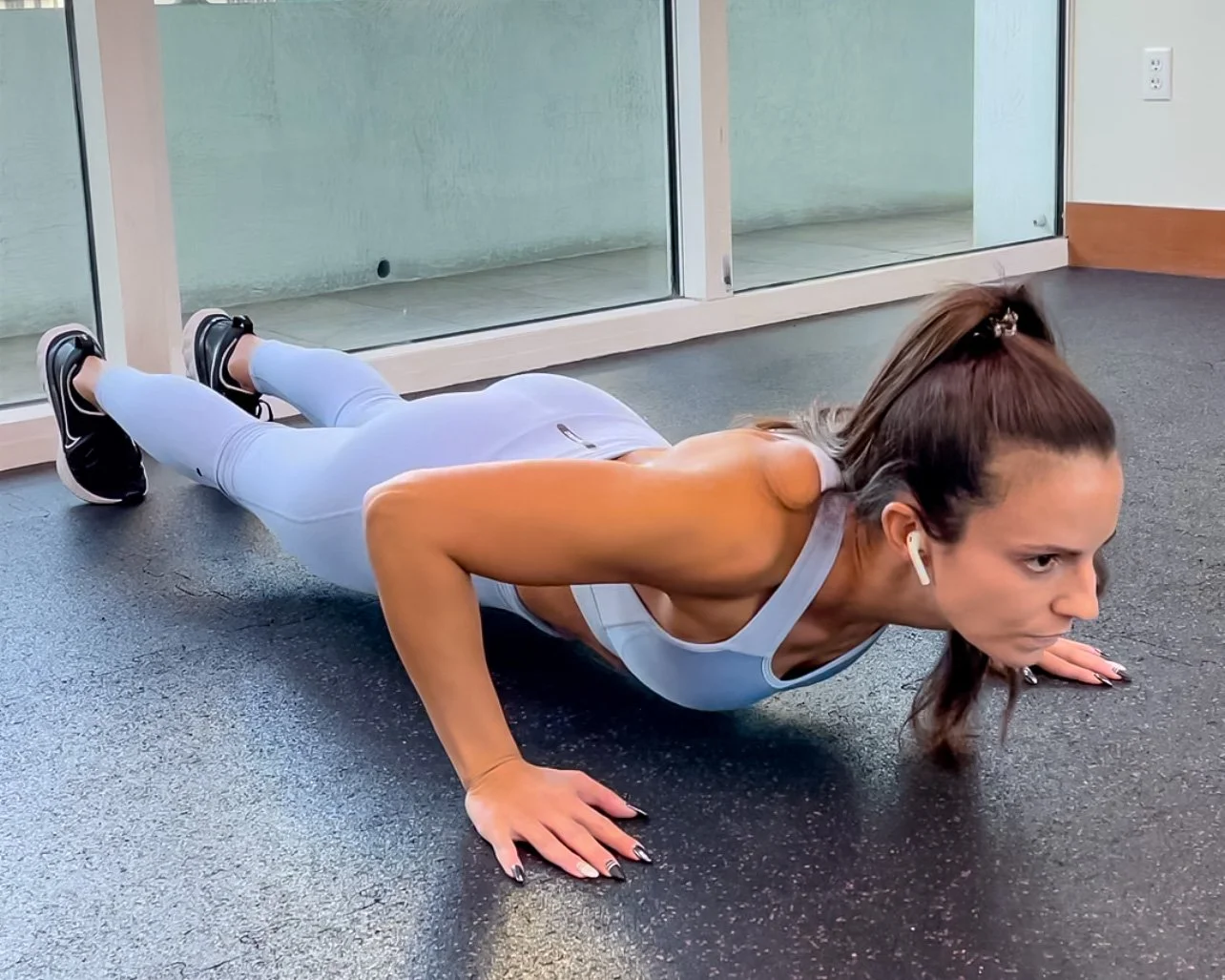If I hear one more woman telling me “I don’t lift weights because I don’t want to get big”, I think I will go nuts! Unless that’s your goal, then no, weight lifting, even heavy weight lifting, will not cause you to bulk up. Women need a man’s-worth of testosterone, an extraordinary amount of calories and a strict lifting plan in order to gain significant increases in muscle size.
Most women rely on cardio when they are trying to lose weight and get lean, but cardio pretty much only helps improve endurance. Don’t get me wrong—I believe everyone should get in some form of daily cardio, but mostly for the heart health benefits. I, myself, am a runner, so I get in way too much cardio! In fact, during marathon training I end up losing strength and muscle tone (which is what is responsible for a round booty, thin and toned arms, and 6-pack abs). As much as I love running, I crave my time in the gym where I can lift heavy consistently and get my body to look toned and strong.
Why you should be lifting heavy now
Weight lifting is the number one way to build lean muscle, drop fat and improve at your sport (hello, runners!). Just like with any sport you want to get better at, building muscle takes a long time. Immediate results from a day of pumping iron are a boost in mood and energy, but if your goal is to change your body composition, burn fat, and get strong, you need to stay consistent for weeks and months at a time. The amount of time to see results varies from person to person, so please don’t compare your progress to someone else’s.
Change your Body Composition
The secret to changing your body composition (some refer to it as body shape) is building muscle. As mentioned before, it takes a long while (think: 6-12+ weeks) to see the physical body changes, so be patient! Although there are different plans to follow depending on your specific muscle-gaining goals, my favorite way to get results is with a split body plan: focusing on 1-2 body parts per day. This way you’re giving full attention to all areas and can get a better balance of strength throughout the entire body.
Strengthen Your Bones
…and help prevent osteoporosis. Once women hit menopause (and sometimes sooner), our bones are at risk of weakening—thanks to the loss of estrogen and other protective hormones. Strength training helps improve and maintain bone density. Heavy weight lifting is an excellent form of strength training that can get you the fastest results.
Live Longer
Once you learn how to lift weights correctly and balance it out with your lifestyle, it’s an activity you can do for the rest of your life. This means keeping that muscle maintenance forever. This will keep you mobile and independent, something the elderly yearn for. Studies show that strength training may be more effective than cardio at lowering your risk of age-related conditions, like heart disease, diabetes, and arthritis.
Top Tips to Get Results Quickly
Eat Enough
It may be confusing but a calorie deficit will not lead to long term weight management or body toning. Building muscle actually requires a surplus of calories. Muscle mass burns calories even when you are at rest. Therefore the more muscle mass you have the more fat you will burn all day long. This is unlike cardio, which only burns calories at the moment you are exercising. It’s a scary thing for women who are trying to lose weight to eat more, but trust me, as long as it’s the right quality, you will lose weight and get lean over the long term.
Understand YOUR Goals
If your goal is to achieve general health, mobility, and disease prevention, then aiming for two to three days of weight lifting is sufficient. If your goal is to build strength, lose fat, and change your body composition, you’ll need between four and six sessions of quality weight lifting. By quality I mean lifting heavy enough to make an impact.
Form First
If you are new to weight lifting, then spending a few weeks working on good form through body weight and light weight exercises is key. The last thing you want is to be all excited about starting a workout program to reach your goals and then get injured from bad mechanics.
Rest
Muscles break down during exercise and build when we are at rest. Yep—you read that right. We need adequate rest in order to get results. This is one reason why I like a split body workout approach. You work each body part once per week and then give it a sufficient amount of time to recover before hitting it again with another grueling session. Try to plan heavy lifting for three to four weeks and follow that with one week of lighter weights to recover.
What is Heavy?
Heavy depends on who’s lifting. I advise my athletes and clients to choose a weight for each exercises that feels heavy and challenging for them. My strategy is performing three to four sets of six to ten reps using a weight that feels heavy and challenging to lift for the last 2-3 reps of the exercise. Once that weight feels easier, move up to a heavier one.
Now go lift heavy, ladies!




